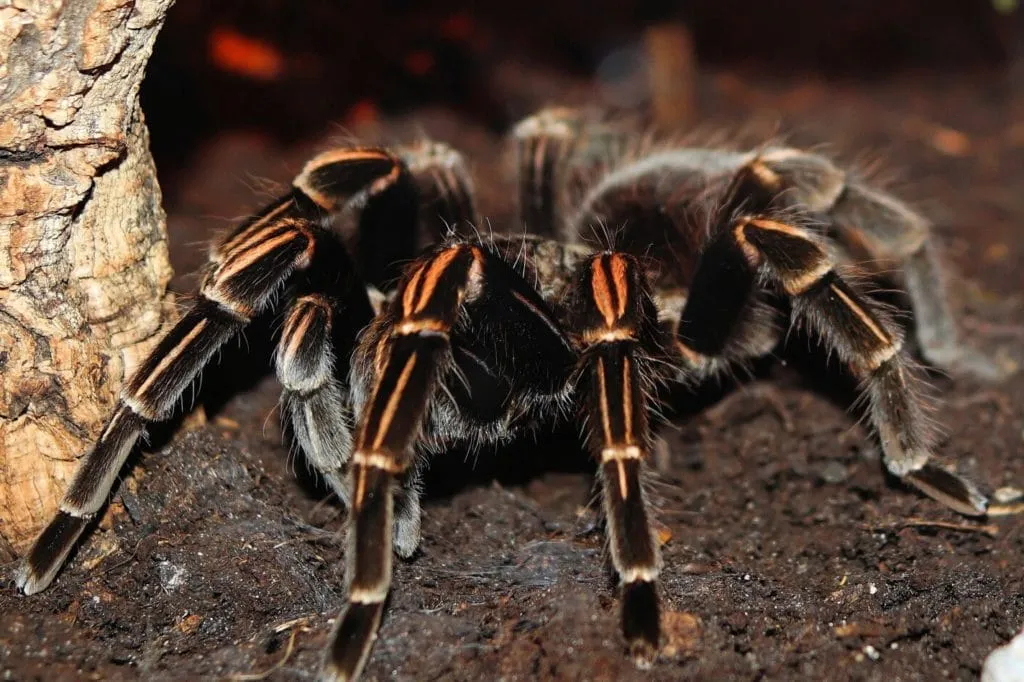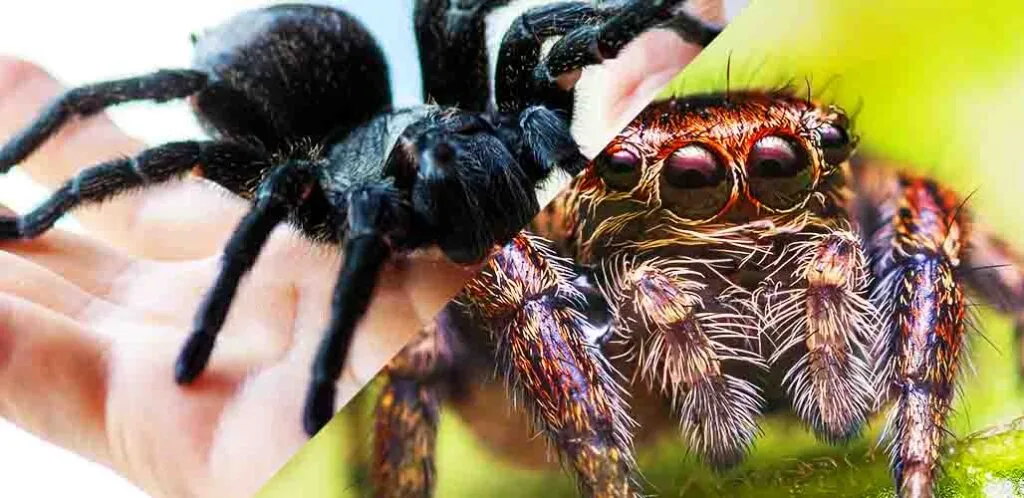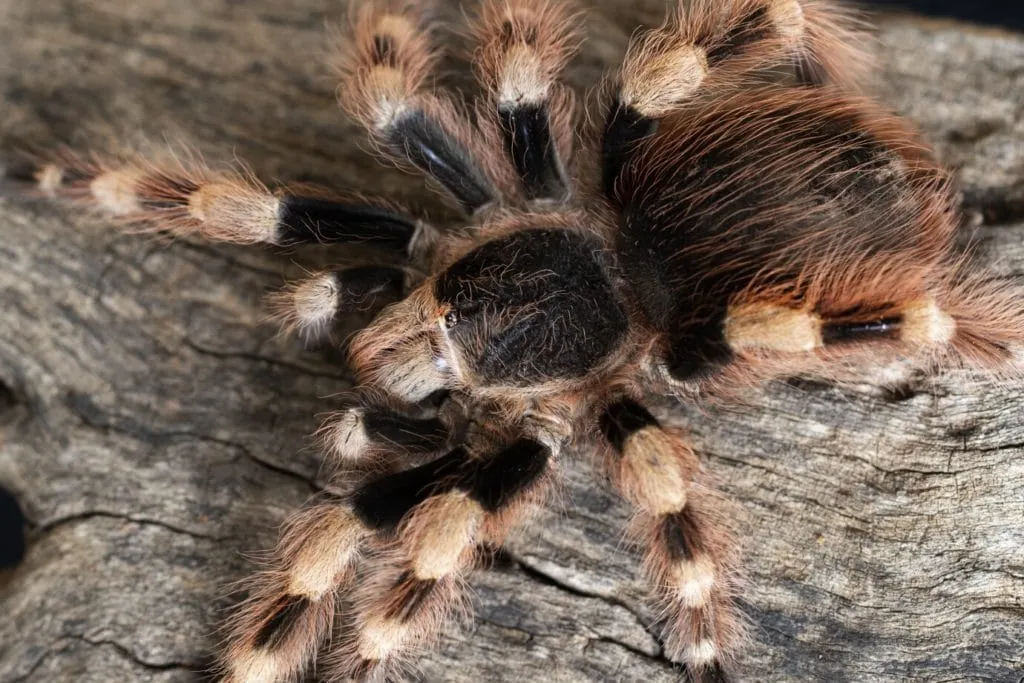Spider vs Tarantula Top 7 Differences
Spiders and tarantulas, both belonging to the class Arachnida, often spark confusion. While they share similarities, significant differences set them apart. This guide provides a detailed comparison, highlighting the key distinctions between spiders and tarantulas, helping you understand these fascinating creatures better. This article will clarify the common questions and provide insights into their unique characteristics, behaviors, and habitats. Whether you’re a seasoned arachnid enthusiast or a curious beginner, this guide will provide you with valuable information and insights.
Size and Appearance
One of the most immediate differences is size. Tarantulas, generally, are much larger than most spiders. Their bodies can range from a few inches to over a foot in leg span, making them imposing figures. Spiders, on the other hand, come in a wide variety of sizes, from tiny, almost invisible species to larger ones, but rarely match the sheer bulk of a tarantula. Body proportions also vary; tarantulas tend to have more robust, hairy bodies, while spiders often have sleeker builds. The hairs on tarantulas also serve a defensive purpose, which can be irritating to predators. The image below shows a general size comparison.
Observe the differences between a spider and a tarantula’s size and appearance in the image.
Body Structure

The body structure provides more clues. Both have two main body parts cephalothorax and abdomen but the proportions differ. Tarantulas, being heavier, have a more robust body structure. Their legs are also generally sturdier, allowing them to support their weight effectively. Spiders, with their more delicate frames, often have longer, thinner legs, optimized for web-building and navigating varied terrains. The arrangement of eyes also varies some spiders have eight eyes arranged closely together, while tarantulas may have eight eyes but arranged differently to improve vision. Examining these structural differences helps distinguish between the two arachnids.
The tarantula, with its heavy body and stout legs, is shown.
Venom and Danger
While both spiders and tarantulas possess venom, the nature and impact differ. Tarantula venom, in most cases, is less potent than that of many spider species. Their venom is typically designed for subduing prey, and while a bite can be painful, it’s rarely life-threatening to humans. Some spider species, however, have highly toxic venom that can cause serious health problems or even be fatal. The level of danger largely depends on the species of spider. Always exercise caution around any arachnid, and seek medical attention if bitten by an unknown spider or tarantula and experiencing symptoms. The image below shows the spider venom.
The image shows the venom.
Habitat and Geographic Range
Spiders and tarantulas have diverse habitats and geographic ranges. Spiders are found worldwide, inhabiting nearly every type of environment, from deserts to forests, from the tropics to the arctic. They are highly adaptable, with species specializing in various niches. Tarantulas, however, tend to be more restricted in their distribution. They are primarily found in warmer climates, such as tropical and subtropical regions of the Americas, Africa, Asia, and Australia. Their habitats often include burrows in the ground, under rocks, or in trees. This difference in habitat provides a major clue in identifying these arachnids.
The image shows the tarantula habitat.
Behavior and Temperament

Behavioral differences are also notable. Tarantulas are often more docile than spiders, tending to be less aggressive and more likely to retreat when threatened. However, they can defend themselves by flicking urticating hairs from their abdomens, which can cause irritation. Spiders exhibit a wider range of behaviors, some are solitary hunters, while others are social and live in colonies. Their temperaments vary greatly by species, ranging from shy and reclusive to aggressive and territorial. Understanding these behaviors is crucial for identifying and interacting with these creatures.
Web-Spinning and Hunting Techniques
Web-spinning is a classic spider behavior, and is a method used to catch prey. Many spiders create intricate webs to trap insects and other small creatures. The structure and design of these webs vary significantly between species, reflecting their hunting strategies. Tarantulas, conversely, are primarily ambush hunters. They often lie in wait, hidden in their burrows or under cover, and pounce on prey that comes within range. They do not use webs to actively trap prey, although they may use silk for lining their burrows or as a tripwire to detect approaching animals. This difference is a key identifier.
Spiders use webs to trap their prey.
Lifespan and Life Cycle
The lifespans of spiders and tarantulas vary significantly. Many spider species have relatively short lives, ranging from a few months to a couple of years. Tarantulas, however, are known for their longevity. Females can live for several decades, often exceeding 20 years in the wild, while males typically have shorter lifespans, especially after mating. This difference reflects their different life cycle strategies, where tarantulas invest in slow growth and long-term survival. The tarantula lifespan is also shown on the image.
The image shows the tarantula lifespan.
Spider vs Tarantula Misconceptions

Common Myths
Several misconceptions surround spiders and tarantulas. One common myth is that all tarantulas are highly venomous and dangerous to humans, which is largely untrue. Another misconception is that all spiders build webs; while many do, others are active hunters. Fear of spiders, or arachnophobia, is a common phobia often fueled by misinformation. Clarifying these myths helps dispel unnecessary fear and promotes a more accurate understanding of these creatures. Many of these misconceptions stem from a general fear of the unknown and a lack of familiarity with these species. The image provides an overview of the spider vs tarantula myths.
The image shows spider vs tarantula myths.
Clarifying Facts
In reality, the vast majority of spiders and tarantulas are harmless to humans. Their primary role in ecosystems is as predators, controlling insect populations and contributing to biodiversity. Understanding their true nature involves recognizing their varied behaviors, habitats, and the actual risks associated with their venom. Learning about their differences, from size and structure to venom and behavior, helps to appreciate them. By correcting misunderstandings, we can foster respect and reduce unnecessary fear, promoting a more informed view of these fascinating arachnids.
In conclusion, while both spiders and tarantulas belong to the arachnid family, they have many differences. Understanding these differences helps in appreciating the diversity of these creatures.
